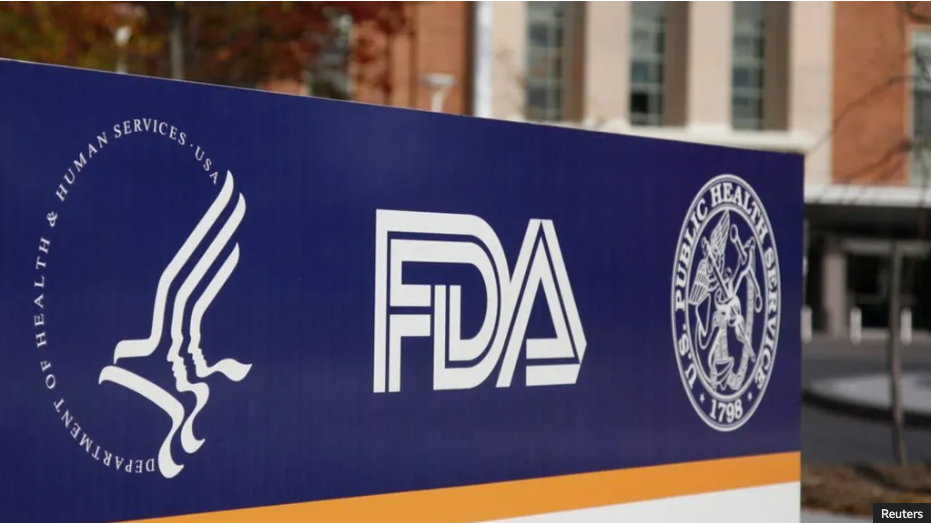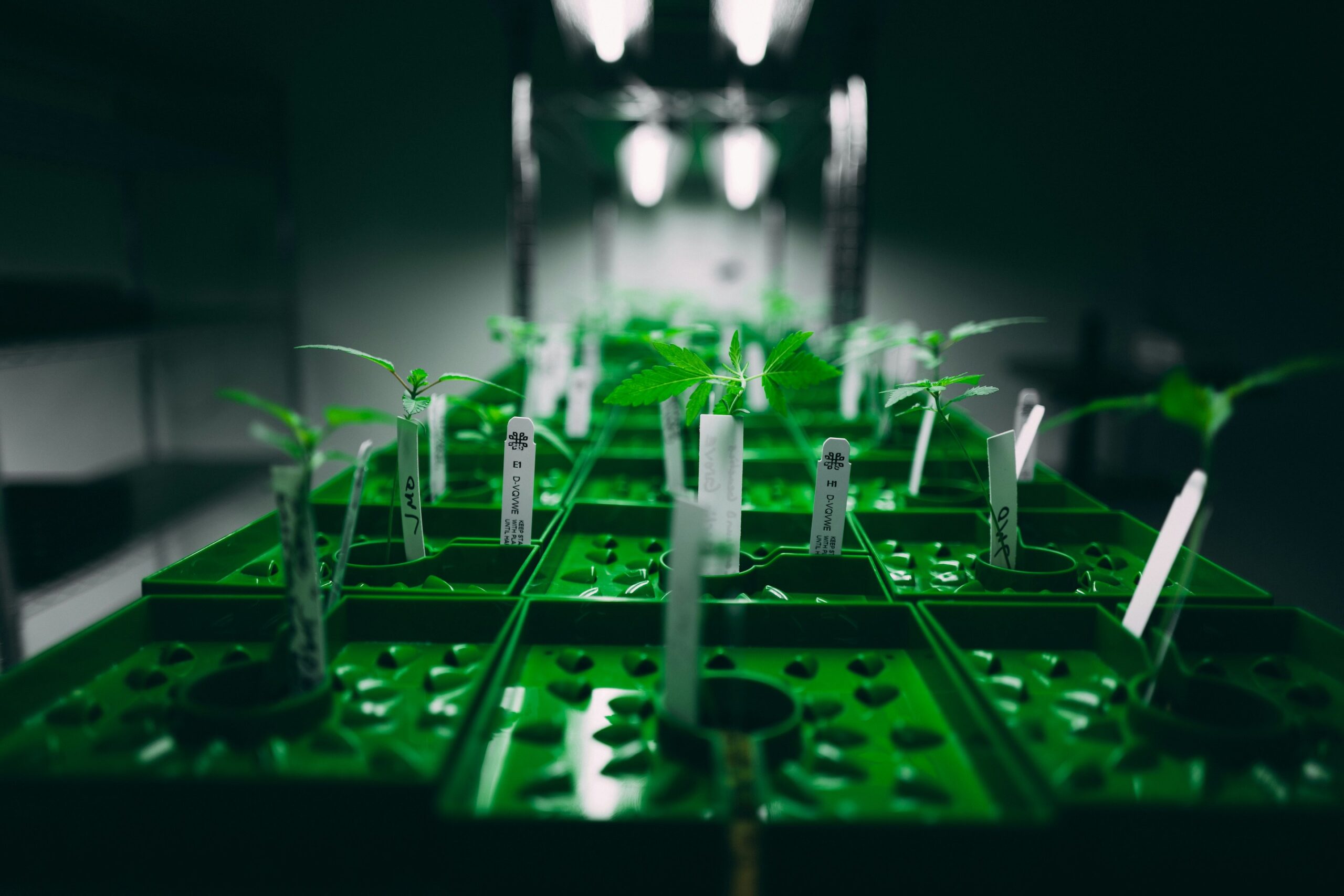March 11th – March 18th, 2022
How Did France’s First COVID-19 Lockdown Impact Cannabis Consumption in Daily Users?
35.5% of participants reported an increase in their cannabis consumption during the first COVID-19 lockdown, a new survey suggests.
The severe acute respiratory syndrome coronavirus (SARS-CoV-2) or COVID-19 is an ongoing epidemic leading to more than 6 million deaths worldwide, as of March 18th, 2022. [1] It is expelled in respiratory droplets from an infected individual and subsequently inhaled by another non-infected individual. Common symptoms include cough, fever, respiratory distress, muscle pain, sore throat, loss of taste and/or smell, which may lead to severe illness and death. [2]
To help prevent the spread of the virus, most countries have implemented lockdown restrictions for which modelers suggested this helped saved millions from dying of COVID-19. [3] For instance, France had three national lockdowns, with the most recent one being in April 2021. [4] The country’s first lockdown was the longest (March 17th – May 11th, 2020) and with the most restricted measures including the closure of schools and non-essential retail shops and limited physical activity of one hour per day within a 1 km radius from home. [5] This reportedly and understandably affected the mental, psychological, and behavioral health of the population, with raising concerns among those who use illicit drugs. Despite being an illegal substance, cannabis remains the most illicit drug consumed in France, with approximately 900 000 daily consumers.
The goal of the present study was to determine the impact of the first COVID-19 lockdown on French daily cannabis consumers and associated correlates. [6] To do so, they used CANNAVID, a French, national, cross-sectional, web-based survey, to which they were able to obtain responses from 4019 participants (74% were men, with median age of 27 years).
Results showed that 7.3% of participants stopped, 28.7% decreased, 28.5% did not change, and 35.5% increased their cannabis consumption during the first lockdown. Increased cannabis use was most frequent in women and in younger age population. Reasons for increased use included unemployment, teleworking, depression, and sleep disorder intensification during lockdown.
The authors concluded: “To our knowledge, this is the first study to investigate the impact of COVID-19 lockdown measures on a large sample of daily CU in France… In a context where the pandemic is still ongoing, these findings could be very useful for clinicians and decision makers when designing and implementing strategies to mitigate adverse health outcomes, including expanded access to healthcare, harm reduction interventions and policy changes.”
Can a Smartphone Application Reduce Cannabis Use Among Court-Involved, Non-Incarcerated (CINI) Youth?
The proposed study is divided into three phases, aiming to be completed in 2025.
Despite showing promising therapeutic applications in disease settings, early-onset cannabis use has been shown to be linked to negative long-term outcomes including cognitive impairment, violent behavior, criminal justice involvement, and substance use disorders. [7],[8],[9] Court-involved, non-incarcerated (CINI) youth comprise 74% of justice-involved youth with 92% testing positive for cannabis. [10],[11] These individuals also have increased risks of being rearrested and detained.
While some interventions are available to help them reduce cannabis use (e.g., referred for services in the community, cognitive-behavioral family-based therapies), they often lead to minimal improvement and are associated with high costs. [12] As such, there is a need to develop alternative strategies to help these teenagers in need.
Researchers at Brown University School of Public Health are developing a smartphone-based application called Teen Empowerment through Computerized Health (TECH) as an adjunct to standard family court services (i.e., treatment-as-usual (TAU) with the goal to reduce cannabis use among CINI youth. [13] To determine whether this can be a useful tool, the authors are proposing three study phases with three aims:
- Aim 1: develop a user-driven smartphone app, TECH, to reduce cannabis use among CINI youth
- Aim 2: examine the feasibility and acceptability of TECH
- Aim 3: test the preliminary effectiveness of TECH as an adjunct to TAU
Phase I included 14 CINI youth, 8 caregivers, and 11 behavioral health app developers and was completed in December 2021. Phases II and III will occur in 2022 and 2023 and 2023 and 2025, respectively.
The authors concluded: “In the final phase of the study, we will conduct a pilot RCT with CINI youth (n=60) to examine the feasibility, acceptability, and preliminary effectiveness of the TECH app… Phase III results will offer a preliminary indication of the effectiveness of the TECH app in reducing cannabis use among CINI youth.”
Cannabis Terpenes in the Treatment of Neurodegenerative Diseases: Results from In Vitro Studies
Terpenes may represent a valuable and alternative option to treat neurodegenerative diseases, a new study suggests.
The cannabis plant contains more than 500 known compounds including phytocannabinoids, terpenes, and flavonoids. [14] While most studies are investigating whether phytocannabinoids such as cannabidiol (CBD) and ∆9-tetrahydrocannabinol (∆9-THC) can be used as therapeutic agents to treat diseases, less emphasis is applied towards the potential application of terpenes.
Similar to phytocannabinoids, terpenes are also produced in the trichomes but contribute to the fragrance of cannabis flowers and products. [15] They constitute a large family of naturally occurring compounds, associated with a wide array of health-promoting and bioactive properties. [16] In total, more than 100 terpenes have been identified in the cannabis plant, each contributing to different therapeutic effects. These may include relaxation, stress-relief, focus, acuity as well as anti-inflammatory properties depending on the type. Some of the most common terpenes found in cannabis include: myrcene (found in mangos and lemongrass), which is reported to have analgesic and sedative properties, pinene (basil and rosemary), caryophyllene (clove and cinnamon) useful for pain as anti-inflammatory agents, and limonene (orange and lemon), which has been shown to be an anxiety and stress reliever.[17],[18],[19],[20],[21] In addition, studies have shown that terpenes may have therapeutic properties to treat neurodegenerative conditions such as Alzheimer’s disease (AD). However, there is a lack of well-defined knowledge on the cellular and molecular pathways by which terpenes may exert these functions.
To determine this, a group of researchers at the University of Adelaide, Australia, aimed to characterize the effects of three common cannabis terpenes, α-bisabolol, myrcene, and β-caryophyllene, following neurotoxic insult, in neuronal cell lines in vitro (i.e., outside the living body and in an artificial environment). [22]
They found that α-bisabolol demonstrated a significant neuroprotective effect against neurotoxic insult (amyloid β exposure) as well as β-caryophyllene also providing a lesser, but significant increase in cell viability.
They concluded: “Our findings demonstrate a novel and efficacious neuroprotective and anti-aggregatory effect of α-bisabolol against β amyloid toxicity… This study indicates that contributions of terpenes and other phytochemicals to the profile of bioactivity of cannabis extracts should be a consideration in the development of formulations for medicinal purposes, particularly those targeting neurodegenerative diseases.”
Will Kentucky Become the Next State to Legalize Medical Cannabis?
Following a failure attempt in 2020, the medical cannabis bill passed the Kentucky House of Representatives and is now moving to the Senate.
On March 17th, 2022, Kentucky House passed a bill which would allow the use of cannabis for specific medical conditions including cancer, multiple sclerosis, chronic pain, epilepsy, and chronic nausea, on a 59-34 vote in favor. This measure was sponsored by Republican Kentucky State Representative, Jason Nemes, who said it would be “Kentucky grown, Kentucky processed, Kentucky tested… If your physician, or your wife or husband’s physician, or God forbid your child’s physician told you that this product works in other states, and it would help your child, what would you do? If you would fight for your kid, hit the green button.” [23] However, he emphasized he would oppose a possible bill change to recreational cannabis.
Democratic Kentucky State Representative and co-sponsor of the bill, Al Gentry, was very enthusiastic about the progress made and hope it will help individuals who need cannabis for various medical conditions. “I know real people that had their lives turned around by these products, and a lot of them are living in the closet or living in secrecy because they feel like they’re a criminal… Please, let’s pass this and allow some people to move on and live a happy life.” [24]
Cannabis remains illegal in Kentucky for both medical and recreational purposes. A proposed bill to legalize it for specific medical conditions was passed in February 2020 (65-30) but was halted due to the COVID-19 pandemic. [25]
References
[1] https://www.worldometers.info/coronavirus/, assessed on March 18, 2022
[2] Lovato A, de Filippis C, Marioni G. Upper airway symptoms in coronavirus disease 2019 (COVID-19). Am J Otolaryngol 2020;41(3):102474. DOI: 10.1016/j.amjoto.2020.102474
[3] Flaxman S, Mishra S, Gandy A, et al. Estimating the effects of non-pharmaceutical interventions on COVID-19 in Europe. Nature 2020;584(7820):257-261. DOI: 10.1038/s41586-020-2405-7.
[4] https://www.bbc.com/news/world-europe-56622471, assessed on March 18, 2022
[5]https://www.legifrance.gouv.fr/jorf/id/JORFTEXT000041746694#:~:text=Dans%20les%20r%C3%A9sum%C3%A9s-,D%C3%A9cret%20n%C2%B0%202020%2D293%20du%2023%20mars%202020%20prescrivant,l’%C3%A9tat%20d’urgence%20sanitaire, assessed on March 18, 2022
[6] Mezaache, S., Donadille, C., Martin, V. et al. Changes in cannabis use and associated correlates during France’s first COVID-19 lockdown in daily cannabis users: results from a large community-based online survey. Harm Reduct J 19, 26 (2022). https://doi.org/10.1186/s12954-022-00611-x
[7] https://www.ncbi.nlm.nih.gov/pmc/articles/PMC2556078/Brady SS, Tschann JM, Pasch LA, Flores E, Ozer EJ. Violence involvement, substance use, and sexual activity among Mexican-American and European-American adolescents. J Adolesc Health 2008;43(3):285-295
[8] https://www.ojp.gov/ncjrs/virtual-library/abstracts/cannabis-use-and-psychosocial-adjustment-adolescence-and-youngFergusson DM, Horwood LJ, Swain-Campbell N. Cannabis use and psychosocial adjustment in adolescence and young adulthood. Addiction 2002;97(9):1123-1135
[9] https://pubmed.ncbi.nlm.nih.gov/12108769/Fergusson DM, Swain-Campbell NR, Horwood LJ. Deviant peer affiliations, crime and substance use: a fixed effects regression analysis. J Abnorm Child Psychol 2002;30(4):419-430
[10] https://ojjdp.ojp.gov/publications/delinquency-cases-in-juvenile-court-2018.pdf, assessed on March 18, 2022
[11] https://www.ojp.gov/ncjrs/virtual-library/abstracts/criminal-neglect-substance-abuse-juvenile-justice-and-children-left, assessed on March 18, 2022
[12] https://pubmed.ncbi.nlm.nih.gov/20219293/Godley SH, Garner BR, Passetti LL, Funk RR, Dennis ML, Godley MD. Adolescent outpatient treatment and continuing care: main findings from a randomized clinical trial. Drug Alcohol Depend 2010;110(1-2):44-54
[13] https://pubmed.ncbi.nlm.nih.gov/35275086/Helseth SA, Guigayoma J, Price D, et al. Developing a Smartphone-Based Adjunct Intervention to Reduce Cannabis Use Among Juvenile Justice-Involved Adolescents: Protocol for a Multiphase Study. JMIR Res Protoc 2022;11(3):e35402. DOI: 10.2196/35402.
[14] https://www.ncbi.nlm.nih.gov/pmc/articles/PMC6473697/Goncalves J, Rosado T, Soares S, et al. Cannabis and Its Secondary Metabolites: Their Use as Therapeutic Drugs, Toxicological Aspects, and Analytical Determination. Medicines (Basel) 2019;6(1). DOI: 10.3390/medicines6010031.
[15] https://pubmed.ncbi.nlm.nih.gov/28355238/Booth JK, Page JE, Bohlmann J. Terpene synthases from Cannabis sativa. PLoS One 2017;12(3):e0173911. DOI: 10.1371/journal.pone.0173911.
[16] https://pubmed.ncbi.nlm.nih.gov/30096653/Nuutinen T. Medicinal properties of terpenes found in Cannabis sativa and Humulus lupulus. Eur J Med Chem 2018;157:198-228. DOI: 10.1016/j.ejmech.2018.07.076.
[17] https://pubmed.ncbi.nlm.nih.gov/1983154/#:~:text=The%20antinociceptive%20effect%20was%20significantly,stimulated%20release%20of%20endogenous%20opioids.Rao VS, Menezes AM, Viana GS. Effect of myrcene on nociception in mice. J Pharm Pharmacol 1990;42(12):877-8. DOI: 10.1111/j.2042-7158.1990.tb07046.x.
[18] https://www.sciencedirect.com/science/article/abs/pii/S0944711304701786do Vale TG, Furtado EC, Santos JG, Jr., Viana GS. Central effects of citral, myrcene and limonene, constituents of essential oil chemotypes from Lippia alba (Mill.) n.e. Brown. Phytomedicine 2002;9(8):709-14. DOI: 10.1078/094471102321621304.
[19] https://pubmed.ncbi.nlm.nih.gov/26119957/#:~:text=In%20this%20study%2C%20we%20found,many%20coniferous%20trees%20and%20rosemary.Kim DS, Lee HJ, Jeon YD, et al. Alpha-Pinene Exhibits Anti-Inflammatory Activity Through the Suppression of MAPKs and the NF-kappaB Pathway in Mouse Peritoneal Macrophages. Am J Chin Med 2015;43(4):731-42. DOI: 10.1142/S0192415X15500457.
[20] https://pubmed.ncbi.nlm.nih.gov/31206687/Brito LF, Oliveira HBM, das Neves Selis N, et al. Anti-inflammatory activity of beta-caryophyllene combined with docosahexaenoic acid in a model of sepsis induced by Staphylococcus aureus in mice. J Sci Food Agric 2019;99(13):5870-5880. DOI: 10.1002/jsfa.9861.
[21] https://pubmed.ncbi.nlm.nih.gov/33548867/#:~:text=Interestingly%2C%20limonene%2Dinduced%20anxiolytic%20activity,DAergic%20and%20GABAergic%20neuronal%20activity.Song Y, Seo S, Lamichhane S, et al. Limonene has anti-anxiety activity via adenosine A2A receptor-mediated regulation of dopaminergic and GABAergic neuronal function in the striatum. Phytomedicine 2021;83:153474. DOI: 10.1016/j.phymed.2021.153474.
[22] http://Cannabis terpenes display variable protective and anti-aggregatory actions against neurotoxic beta amyloid in vitro: highlighting the protective bioactivity of alpha-bisabolol in motorneuronal-like NSC-34 cells. Neurotoxicology 2022Laws Iii JS, Shrestha S, Smid SD. Cannabis terpenes display variable protective and anti-aggregatory actions against neurotoxic beta amyloid in vitro: highlighting the protective bioactivity of alpha-bisabolol in motorneuronal-like NSC-34 cells. Neurotoxicology 2022. DOI: 10.1016/j.neuro.2022.03.001.
[23] https://www.wkyt.com/2022/03/17/ky-house-passes-medical-marijuana-bill/, assessed on March 18, 2022
[24] https://www.wlwt.com/article/kentucky-bill-legalize-medical-marijuana/39468234, assessed on March 18, 2022
[25] https://www.mpp.org/states/kentucky/, assessed on March 18, 2022






